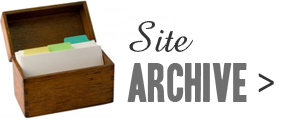 Have you ever wondered why a crossword setter chose that pseudonym for himself/herself? Is Rufus a redhead, Cryptonyte a Superman fan? Why does Dean Mayer call himself Anax and Loroso? Three of John Henderson's pseudonyms (Enigmatist, Nimrod, Elgar) come from Enigma Variations; what's with the fourth - "Io"?
Have you ever wondered why a crossword setter chose that pseudonym for himself/herself? Is Rufus a redhead, Cryptonyte a Superman fan? Why does Dean Mayer call himself Anax and Loroso? Three of John Henderson's pseudonyms (Enigmatist, Nimrod, Elgar) come from Enigma Variations; what's with the fourth - "Io"?
Read on to know the stories behind some intriguing pseudonyms of our cryptic crossword setters.
1 Neil Shepherd, an ardent Wagnerite, sets as Alberich in the FT and Klingsor in the Independent. Both his pseudonyms are based on characters from Wagner's operas.
2 Roger Squires derives his most popular id Rufus from his initials RFS (Roger Frank Squires). Roger's father Frank Squires, born in 1888 before the advent of the modern crossword, loved playing with words. Roger recalls him entering wordplay competitions in the magazine John Bull; one of his winning entries was for the word CONTENTMENT - "Wife, whiff and woof" (in those days everyone smoked).
3 All of John Halpern's pseudonyms are words of four letters. He is best known as Paul in the Guardian, named after his elder brother. When he began setting for the FT, he called himself Bats, which was the nickname of his girlfriend at that time. After they broke up John changed his pseudonym to Mudd as "his name was then mud".
4 On the Daily Telegraph Toughie, his latest entry as setter, John Halpern calls himself Dada – he says he has chosen this name as it is anti-war, anti-bourgeois and anarchist.
5 Don Manley's pseudonyms - Duck (Listener), Pasquale (Guardian), Quixote (Independent), Bradman (FT), and Giovanni (Daily Telegraph Toughie) – are all linked to the name "Don" or "Donald".
6 John Galbraith Graham, best known as Araucaria of the Guardian, takes his name from the Latin word for The Monkey-puzzle Tree. He also sets in the FT as Cinephile, which is an anagram of Chile Pine, a synonym for the tree Araucaria.
7 "The Unpronounceable One" as he has been dubbed by FT bloggers, Phssthpok gets his name from a character in Larry Niven's 1973 science fiction novel Protector.
8 For a long time, Indian crossword solvers recognised CG Rishikesh as "Chaturvasi", unaware that he is none other than The Hindu Crossword setter Gridman. It is a wonder that solvers did not make the connection between the two from their pseudonyms alone – Chaturvasi is Hindi for "one who dwells in a grid", meaning roughly the same as Gridman.
9 Setter Dumpynose of the Spectator gets his pseudonym from the anagram of the word "pseudonym".
10 Anax is a reversal of his daughter's name Xana. That name itself was an invented one, derived from the parents' AOL screennames: Anax was Xwordmaker, his partner's screenname ended with '-ina'. They came up with Xina at first but because that was very similar to Xena (the Warrior Princess) the name was altered slightly to Xana.
11 For his pseudonym on FT, Anax wanted something with an Italian 'feel' as a reminder of his family that lives in Italy. He hit upon the perfect Italian-sounding name Loroso by looking at his home address for inspiration - LOndon ROad SOuth.
12 Two more pseudonyms that come from the setter's home address: Hodge and Bower, formerly used by Roger Squires in the Independent. Roger Squires lives on the road Hodge Bower in Shropshire. He had further reasons for naming himself Hodge - it is the shortened name for Roger, and also the name of Dr Johnson's cat (Roger loves cats). In addition, Hodge means "rough peasant" and his "friends" think that suits him.
13 Michael Curl sets as Cincinnus in the FT. Cincinnus is a Latin word meaning 'curl', a word used figuratively to describe a flourish in the art of rhetoric – almost like the art of cryptic wordplay. The choice of pseudonym had an additional attraction - if one pronounces both Cs as 'hard' rather than 'soft' the word is a near homophone of 'kinkiness'.
14 Orlando, Michael Curl's pseudonym in the Guardian, is a Spanish/Italian variant of his middle name Roland.
15 Tony Sebastian's moniker Cryptonyte in The Hindu comes from cryptic+Tony. The word is also a soundalike of Superman's nemesis Kryptonite – the implication being that this is what "Superman" solvers are up against.
16 Raich is the pseudonym of Niall MacSweeney for crosswords in various publications like The Independent, The Listener and Enigmatic Variations in the Sunday Telegraph. The pseudonym refers to Raich Carter, probably the best player in Sunderland AFC's history. Niall MacSweeney is a lifelong supporter of the club.
17 Setter Boatman of the Guardian takes his pseudonym from his 100-foot Dutch barge, which he spent 10 years converting from a working vessel into a floating home (have a look at the sketch of his boat on his website). That's all there was to it at first but he soon realised that the pseudonym was amenable to wordplay in clues - Boatman could mean not just I or ME but also TAR, AB and other shipboard characters. So the name, and the way of playing with it, stuck.
18 Paul Bringloe calls himself Tees in the Independent and Neo in the FT. Tees because it sounds like 'Tease', and Neo is inspired by the lead character in the movie The Matrix.
19 John Young sets in the Guardian as Shed, an undergraduate nickname he got for looking sloping and ramshackle.
20 In the FT, John Young uses the pseudonym Dogberry, named after the comic constable in Much Ado About Nothing who keeps getting his words in a muddle (e.g. 'comparisons are odorous'), of whom somebody says 'this learned constable is too cunning to be understood'. John Young took on this pseudonym on the sugggestion of the FT crossword editor Colin Inman.
21 John Dawson's pseudonyms Armonie (FT) and Chifonie (Guardian) are both alternative names the hurdy-gurdy or the 'wheel-fiddle', a musical instrument whose strings are played using a cranked wheel which rubs against the strings to produce sound.
22 Mick Hodgkin sets as Morph in the Independent. Morph because, at the time, he was a programme editor for More 4 News - the pseudonym is homophonically indicated at the start of that. He was also attracted by the malleability of the childrens' TV character Morph which seemed appropriate for the way setters play with language - and there was the additional plus of the pseudonym containing all of Mick's initials MOH.
23 Mick Hodgkin's pseudonym Micawber in the Daily Telegraph Toughie is named after the optimistic Dickensian character. The start of the name Micawber also sounds like his real name 'Mick'.
24 Setter Spiffytrix of The Hindu is a fan of Calvin and Hobbes and Asterix comics. The Spiff in his name comes from Calvin's alter-ego Spaceman Spiff, and the -trix is a tribute to the Gaulish spirit.
25 Roger Squires met the great American magician Dante during WWII during his tour of Britain, and from him caught the magic bug. After joining the RN in 1947, he would put on variety shows in whatever ship he was in. On leaving service, he initially earned his living through magic, acting and crosswords. Roger's pseudonym Dante in the FT is his tribute to the great magician.
26 Brian Greer sets as Virgilius in the Independent, named after an Irish monk in the 6th century who worked on manuscripts. To make the time pass more interestingly, he composed acrostics.
27 Brian Greer emigrated to the US in 2000. When he began contributing to the Guardian he chose the pseudonym Brendan, named after St. Brendan, the Irishman who came to America long before Columbus.
28 A long time ago, John Henderson set a thematic puzzle featuring all of the known moons of Jupiter - except Io, which as a 2-letter word wasn't valid as a grid entry. So he used it as his pseudonym instead. Although it appears initially to have no connection to his other pseudonyms Enigmatist (Guardian), Nimrod (Independent) and Elgar(Daily Telegraph) , cryptically IO is a part of the 'VariatIOns'.
29 As you will know, Icarus of Greek mythology flew by means of wings invented by his father Daedalus. He flew too near the sun, the wax fixing his wings melted, and he crashed.
On 9th March 1961, Roger Squires was flying in the Fleet Air Arm from HMS Hermes off Ceylon (now Sri Lanka), when his aircraft stalled just before landing on the carrier. He managed to escape from about 60 feet below the sea and was picked up by a helicopter in seconds. His co-pilot did not survive the crash.
Roger Squires used the pseudonym Icarus for his early Independent crosswords, as a reminder of how lucky he was on that fateful day.
30 The pseudonym Biggles of the Guardian comes from the author WE Johns, creator of the character Biggles. Biggles is not an individual setter but a team of four crosswords setters whose first names are all John (therefore, "WE Johns") – Araucaria (John Galbraith Graham), Enigmatist (John Henderson), Paul (John Halpern) and Shed (John Young).
31 P.C. Jayaraman sets for The Hindu as Sankalak, which is a Sanskrit word for 'compiler'.
32 Neyartha of The Hindu is Sanskrit-inspired, too. Neyartha means "provisional intent" – i.e. something that requires interpretation, not to be taken at face value – just like cryptic crossword clues.
33 R D Anderson's pseudonym Crucible came about when he submitted his first puzzle to the Guardian, themed on the World Snooker Championships. He suggested Crux to the Guardian crossword editor Hugh Stephenson, but found out it was already in use. Hugh then proposed Crucible, the name of the venue in Sheffield.
His other pseudonyms - Radian in the Independent and Redshank in the FT - are simply based on the name R D Anderson.
34 Dean Mayer's brother and his wife emigrated to Canada with their four young girls about five years ago. His pseudonym Elkamere in the Telegraph Toughie comprises the first two letters of each of his niece’s names.
35 Arden and Mover of The Hindu derive their pseudonyms from prominent letters in their names: Arden is A R DEvanathaN and Mover is MOhan VERghese Chunkath. The link between 'Mover' and his preference for moving letters (anagrams) is, in the setter's words, Jungian synchronicity.
36 In college and later at work, close friends used to call Bhavan 'B'. When he joined The Hindu as setter, Bee or Buzzer sounded like a natural extrapolation. Buzzer currently lives in Australia where his colleagues have given him a local nickname of Baz, short for Bazza - a coincidental homophone the setter is happy with.
37 Vinod Raman's pseudonym in The Hindu Textrous, in addition to being a portmanteau of 'text' and 'dextrous', is anagram of the name of Vinod's favourite author, Rex Stout.
38 The adjective 'scintillating' impressed Shyam very much when he came across it at the age of ten in The Hindu's sports column. The word became part of his first email ID (something he uses to this date) and then made its way into his pseudonym as crossword setter for The Hindu. The choice of Scintillator is also in line with Shyam's love for Physics.
39 Paul Henderson sets as Phi in The Independent, formed from the initials of his name plus a self-referential 'I'. The name has become so much a part of his identity that on moving to NZ, he acquired the numberplate PHI 1 for his car.
Paul Henderson's pseudonym Kcit (pronounced with the 'c' silent) in The Sunday Telegraph is also based on his initials: since HP (hire purchase) is 'tick', it follows that PH would be 'kcit'.
40 Sarah Hayes chose Arachne as a nom de guerre when she debuted in The Guardian, since she was a keen amateur weaver of cloth at the time embarking on a career as a weaver of words. The mythological character Arachne appealed to her as she was not only a very good weaver, but also rather headstrong, causing Athena to turn her into a spider (Arachne means 'spider' in Greek).
Her pseudonym Anarche in the Independent (an anagram of Arachne) ties in with her philosophy of life, what she calls 'anarcho-horizontalism'.
41 In the FT, Sarah Hayes is Rosa Klebb, named after a villain in the James Bond film "From Russia with Love". Rosa Klebb is a play on the Soviet feminist slogan khleb i rozy, meaning "bread and roses". The idea for the name came from Big Dave: when he met Sarah for the first time at an S&B event, he said he had the ideal pseudonym for her should she ever need another one.
42 Geoff's initials are GLO (from Geoff Lewis Oxley), so he was called Glow-worm at school, but in addition Geoff realised that glow-worms create "lights". When he had to choose a pseudonym for the Independent's puzzles, Glow-worm was his ready choice, which he continued to use in The Listener and the Enigmatic Variations puzzles.
Geoff sets The Telegraph Toughie as his alter-ego Firefly, another "light" creator.
43 Dr. X of The Hindu is Satyen Nabar - an orthopaedic surgeon by day, a crossword setter by night. The "Dr." in his pseudonym signals his first calling, the "X" stands for the game of the Xword.
44 Steve Bartlett is a supporter of Ximenean clueing, and his pseudonyms reflect his stance. In the Independent and the Listener, he is eXternal: the X (for Ximenes) goes inside "eternal" ie Ximenes forever. In the Telegraph Toughie and Enigmatic Variations, he is proXimal: pro(in favour of) Xim(enes) with the -al borrowed from eXternal. He sets as ARTEXLEN in the FT - an anagram of eXternal, which also gives the impression of the compiler being a plasterer called Len who sets puzzles in his spare time.
45 The Herald expects setters to use three-letter pseudonyms, and so Steve Bartlett called himself Boz for this puzzle - a hat-tip to Charles Dickens who sometimes penned under the name Boz. For the National, a Scottish pro-independence paper, he chose the name Claymore as a nod to the Scottish identity and referencing the traditional battle between setter and solver.
46 Lucy Evans sets as Navy in the Telegraph: her name yields the anagram "Navy clues".
Related Posts/Links:
If you wish to keep track of further articles on Crossword Unclued, you can subscribe to it in a reader via RSS Feed. You can also subscribe by email and have articles delivered to your inbox, or follow me on twitter to get notified of new links.



 As you've seen in the
As you've seen in the  Sample this clue from the Times crossword of yesterday:
Sample this clue from the Times crossword of yesterday: A semi-&lit (semi all-in-one) clue is a variant of the
A semi-&lit (semi all-in-one) clue is a variant of the  Have you ever wondered why a crossword setter chose that pseudonym for himself/herself? Is Rufus a redhead, Cryptonyte a Superman fan? Why does Dean Mayer call himself Anax and Loroso? Three of John Henderson's pseudonyms (Enigmatist, Nimrod, Elgar) come from
Have you ever wondered why a crossword setter chose that pseudonym for himself/herself? Is Rufus a redhead, Cryptonyte a Superman fan? Why does Dean Mayer call himself Anax and Loroso? Three of John Henderson's pseudonyms (Enigmatist, Nimrod, Elgar) come from 






 Follow on Twitter
Follow on Twitter Join us on Facebook
Join us on Facebook Get RSS
Get RSS
